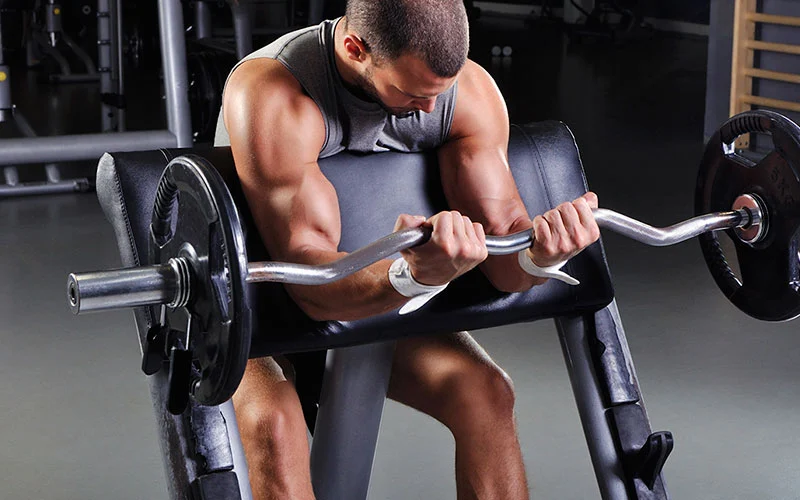The 5×5 Strength Training Program: Complete Guide for Muscle and Power
Introduction: Why 5×5 Became Legendary
If you’ve been around gyms or fitness forums, you’ve probably heard of 5×5 training. It’s simple, brutally effective, and has been a staple of strength and muscle building for decades.
The idea is straightforward:
👉 Five sets of five reps on big compound lifts.
But don’t be fooled by its simplicity. Done right, 5×5 training can take you from beginner to seriously strong while packing on muscle in the process.
In this guide, I’ll break down exactly how the 5×5 program works, why it’s so effective, and how to run it whether your goal is pure strength, hypertrophy, or a mix of both.
What Is 5×5 Training?
The 5×5 program is built around performing five sets of five reps on core compound lifts like the squat, bench press, and barbell row.
Core Principles of 5×5:
- Low-to-moderate reps (5): Heavy enough to build strength, enough volume to stimulate muscle growth.
- Big lifts first: Squat, bench, row, overhead press, deadlift.
- Progressive overload: Add a small amount of weight each session.
- Full-body structure: Train three days per week, alternating between two workouts.
This combination makes 5×5 one of the best systems for lifters who want to get both stronger and bigger.
The Origins of 5×5 Training
The concept of 5×5 dates back to Reg Park (Arnold Schwarzenegger’s idol), who used it in the 1950s to build size and strength.
Since then, it’s been adapted by coaches like Bill Starr, Mark Rippetoe (Starting Strength), and Mehdi Hadim (StrongLifts 5×5).
Why has it stood the test of time? Because it works. It’s a simple, progressive plan that delivers results for almost anyone who sticks with it.
The Standard 5×5 Workout Structure
Most 5×5 programs use two alternating workouts:
Workout A
- Squat – 5×5
- Bench Press – 5×5
- Barbell Row – 5×5
Workout B
- Squat – 5×5
- Overhead Press – 5×5
- Deadlift – 1×5
Weekly Schedule Example:
- Monday: Workout A
- Wednesday: Workout B
- Friday: Workout A
- Next week → Start with Workout B
Yes, you squat every workout. That’s not a mistake — it’s part of the magic. Frequent squatting builds a powerful base and drives full-body growth.
Why 5×5 Training Works
- Strength + Hypertrophy Sweet Spot
Five reps per set hits the perfect middle ground: heavy enough to build strength, enough volume to stimulate muscle growth.
- High Frequency Practice
By squatting three times a week, pressing twice, and pulling twice, you get lots of quality practice on core lifts. This builds technique fast.
- Progressive Overload Built-In
Every workout, you add weight to the bar. Simple, measurable progress.
- Balanced Training
The push (bench, press), pull (rows, deadlift), and squat balance creates total-body strength without neglecting any area.

How to Progress on 5×5
Progression is what drives results. Here’s how it works:
- Start light: Use a weight you can handle easily for 5×5. This builds momentum and confidence.
- Add weight each workout:
- +2.5 kg / 5 lbs for upper body lifts
- +5 kg / 10 lbs for squats and deadlifts
- Stick to linear progression: Keep adding until you can’t complete all 5×5 sets with good form.
When You Stall
Everyone stalls eventually. When it happens:
- Repeat the same weight next session.
- If you fail 3 times in a row, deload by 10% and rebuild.
- Once you’ve deloaded twice, it might be time to move to an intermediate program.
Strength vs. Hypertrophy: Is 5×5 Enough to Build Muscle?
Yes — especially for beginners and intermediates. The volume (25 reps per lift) is plenty to grow muscle, provided your nutrition and recovery are dialed in.
For pure bodybuilding goals, you can add accessory work (arms, lateral raises, abs) at the end of each session. But the core 5×5 lifts will still do the heavy lifting — literally.
Tips for Success on 5×5
- Perfect Your Squat Form: You’ll be squatting a lot. Poor form = guaranteed stall or injury.
- Respect Recovery: Three workouts a week is plenty. Don’t add “extra” lifting days.
- Eat Enough: 5×5 burns energy. If you’re not gaining muscle, you’re not eating enough.
- Track Your Lifts: Write down every set. Progress is motivating when you see it on paper.
- Be Patient: The jumps may seem small, but they add up. +5 lbs per week = +260 lbs in a year.
Sample 5×5 Accessory Work (Optional)
If you want a little more hypertrophy focus, add 2–3 sets of these after the main lifts:
- Barbell Curls – 2×10–12
- Triceps Pushdowns – 2×10–12
- Lateral Raises – 2×12–15
- Hanging Leg Raises – 3×12–15
Keep it minimal. The main program already delivers 90% of your results.
Nutrition for 5×5 Success
- Calories: Eat in a slight surplus (+200–300 kcal over maintenance).
- Protein: 1.6–2.2 g per kg bodyweight daily.
- Carbs: Fuel your lifts — don’t fear carbs. They drive performance.
- Hydration: At least 2–3 liters of water per day.
Without proper nutrition, don’t expect to recover or grow.
Who Should Do 5×5?
- Beginners: Perfect first program. Builds strength and size fast.
- Intermediates: Still effective until you truly plateau.
- Advanced lifters: May need more variation and volume, but 5×5 can still work for short phases.
Common Mistakes on 5×5
- ❌ Starting too heavy: Ego lifting kills progress. Start light.
- ❌ Skipping squats: They’re the backbone of the program. Don’t skip them.
- ❌ Overtraining: More isn’t better. Stick to the plan.
- ❌ Poor sleep/nutrition: Recovery fuels progress. Ignore it and you’ll stall early.
FAQs
Q: Can I lose fat on 5×5?
Yes. If you eat in a calorie deficit, 5×5 will help preserve strength and muscle while cutting fat.
Q: Is 5×5 good for women?
Absolutely. Women benefit just as much as men from heavy compound lifting.
Q: How long should I run 5×5?
Most lifters can progress on 5×5 for 6–12 months before needing an intermediate program.
Conclusion: Why 5×5 Still Works Today
The 5×5 strength program has been around for decades because it works. It’s brutally simple, repeatable, and effective for building both muscle and strength.
If you’re serious about building a strong foundation and want a plan that guarantees progress, 5×5 is one of the best places to start.
👉 Next up: Push Pull Legs Routine — Beginner to Advanced Guide.




